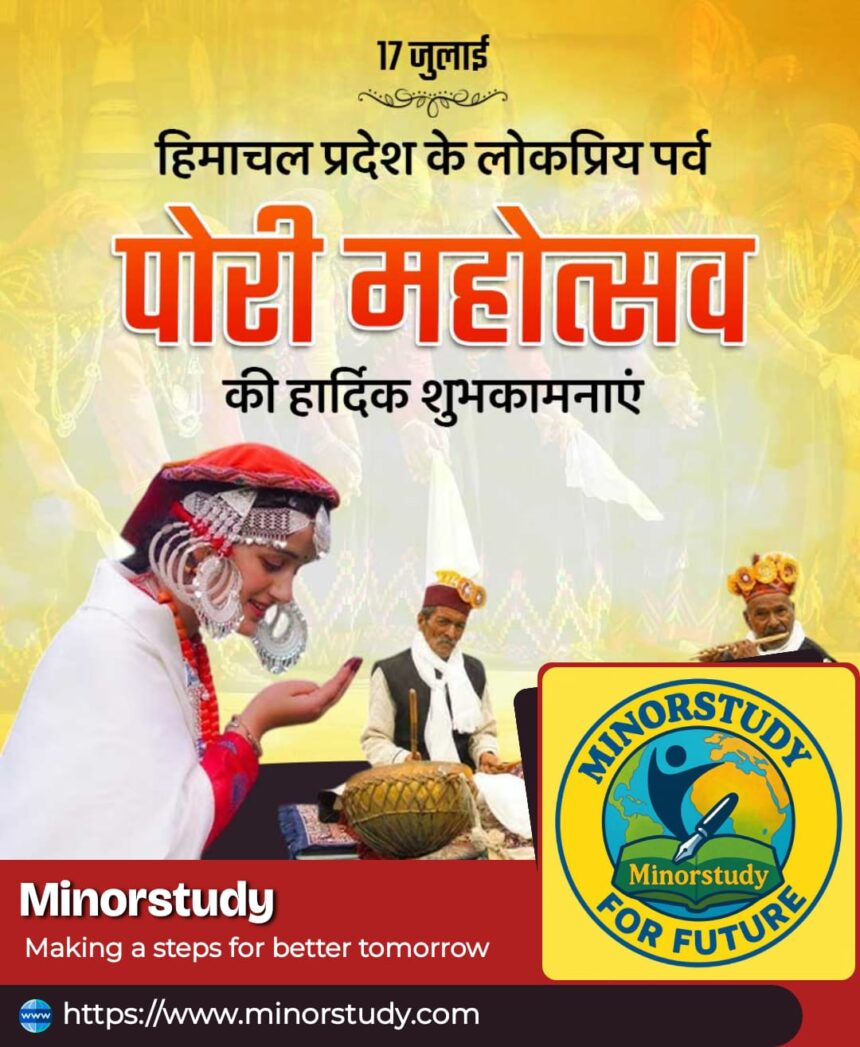🎉 9 Fascinating Facts That Make Pori Festival a Joyful Symbol of Ladakhi Spirituality
Pori Festival: In the majestic, remote valleys of Zanskar, nestled deep within Ladakh, lies a spiritual celebration that few outside the region know—but those who do, cherish it dearly. This is the Pori Festival—a sacred Buddhist tradition that brings the community together in devotion, celebration, and unity. Though humble in scale compared to pan-Indian festivals, Pori holds deep spiritual and cultural meaning for the people of the Himalayan highlands.
- 🧭 Introduction: What is the Pori Festival?
- 🕉️ Historical Origins of the Pori Festival
- 📜 Timeline of Key Events in the Pori Festival’s Legacy
- 📌 9 Fascinating Facts About the Pori Festival
- ❓ Frequently Asked Questions (FAQs)
- Q1: When is the Pori Festival celebrated?
- Q2: Is it open to tourists?
- Q3: What is the spiritual goal of Pori?
- Q4: Are there any modern influences?
- Q5: Why is the horse ride significant?
- ✨ Significance of the Pori Festival
- 🕊️ 1. Preservation of Buddhist Tradition
- 🤝 2. Social Harmony & Community Bonding
- 🧘 3. Spiritual Renewal
- 🌿 4. Eco-Conscious Observance
- 🧘♂️ Daily Life Impact of the Pori Festival
- 🥰 Heartfelt Wishing on Pori Festival
- 📌 Important Points to Remember
- 📚 Conclusion: Why Pori Festival Matters Today
In this comprehensive article, we explore the history, facts, timeline, significance, observance, daily life impact, and FAQs about the Pori Festival in a warm, human-centered tone. Let’s dive into this unique spiritual tradition that celebrates more than rituals—it celebrates inner peace and communal love.
🧭 Introduction: What is the Pori Festival?
The Pori Festival is an annual Buddhist festival celebrated in Zanskar, primarily at the Karsha Monastery, one of the largest and most revered monastic institutions in Ladakh. Celebrated with ceremonial processions, rituals, and horse parades, Pori marks the arrival of the founder of the Gelugpa order, Je Tsongkhapa, and honors the traditions of Buddhist teachings and monastic life.
Unlike mainstream festivals, Pori is quiet, reflective, and deeply tied to Buddhist philosophy and community spirit.
🕉️ Historical Origins of the Pori Festival
The Pori Festival is believed to have originated centuries ago as part of the Tibetan Buddhist Gelug tradition, which emphasizes:
Strict monastic discipline
Deep philosophical study
Compassionate service
Its roots are tied to Je Tsongkhapa, the founder of the Gelug school of Tibetan Buddhism, and his spiritual journey. The tradition traveled to Zanskar along with the spread of Buddhism from Tibet and evolved into an annual community observance led by the Karsha Monastery, a spiritual stronghold in the region.
📜 Timeline of Key Events in the Pori Festival’s Legacy
| Period/Date | Event |
|---|---|
| 14th Century | Spread of Gelugpa (Yellow Hat) order in Tibet and Ladakh |
| ~15th Century | Karsha Monastery founded; local Buddhist traditions evolve |
| Early centuries | Community begins annual Pori Festival observance |
| Present Day | Annual festival held in mid to late July, drawing devotees from the entire Zanskar valley |
📌 9 Fascinating Facts About the Pori Festival
🐎 Main Event Involves a Horse Procession: The chief lama rides a decorated horse across the valley, symbolizing spiritual leadership and humility.
🏞️ Celebrated in a Remote Region: Takes place in Zanskar, an isolated high-altitude desert region in Ladakh.
🛕 Karsha Monastery at the Center: The oldest and largest monastery in Zanskar leads the ceremonies.
🙏 Spiritual Significance Over Materialism: Unlike other festivals, Pori emphasizes ritual purity and detachment.
👥 Communal Participation: Villagers gather for feasting, music, and rituals, reinforcing unity and peace.
📿 Monastic Rituals: Monks conduct pujas, chant sutras, and offer blessings to devotees.
🔔 Sacred Soundscapes: Cymbals, long horns, and conch shells echo through the mountains during the ceremonies.
🧘♂️ Meditative Focus: Devotees often engage in personal prayer, fasting, and self-reflection.
🌍 Eco-Friendly & Simple: No artificial decoration or wastage—only local materials, natural colors, and handmade offerings.
❓ Frequently Asked Questions (FAQs)
Q1: When is the Pori Festival celebrated?
A: The festival is usually celebrated in July (dates vary based on the Tibetan lunar calendar) at Karsha Monastery in the Zanskar region of Ladakh.
Q2: Is it open to tourists?
A: Yes, but with sensitivity. Visitors are welcome, but expected to observe silence, respect monastic practices, and follow local customs.
Q3: What is the spiritual goal of Pori?
A: To honor Je Tsongkhapa, promote community harmony, and reinforce Buddhist discipline and compassion.
Q4: Are there any modern influences?
A: Minimal. Pori remains rooted in traditional practices with very little modern intervention, which adds to its charm.
Q5: Why is the horse ride significant?
A: It symbolizes the journey of enlightenment, echoing ancient times when lamas would ride across regions to spread the Dharma.
✨ Significance of the Pori Festival
🕊️ 1. Preservation of Buddhist Tradition
The Pori Festival plays a key role in preserving the Gelug monastic tradition in a rapidly modernizing world. It acts as a spiritual anchor for local communities.
🤝 2. Social Harmony & Community Bonding
Pori brings together monks, elders, youth, and even distant travelers. Sharing meals, prayers, and joy reinforces Zanskari identity and collective strength.
🧘 3. Spiritual Renewal
For monks and villagers alike, the festival offers a pause from worldly duties, inviting deep inner reflection and spiritual cleansing.
🌿 4. Eco-Conscious Observance
Its naturalistic approach to celebration—minimalism, use of organic materials, local foods—also makes Pori an example of sustainable spirituality.
🧘♂️ Daily Life Impact of the Pori Festival
Although the Pori Festival occurs once a year, its teachings ripple through daily Zanskari life:
Teaches patience and humility—qualities seen in local hospitality and generosity.
Inspires eco-conscious living—most villagers still live in harmony with nature.
Strengthens community values—elders, youth, and monks interact respectfully and cooperatively.
Reminds people of impermanence, a core Buddhist belief, encouraging detachment from material desires.
The Pori Festival keeps the spiritual heartbeat of Zanskar alive, even when the snows set in and the valleys grow silent.
🥰 Heartfelt Wishing on Pori Festival
“May the light of wisdom guide your path. May the peace of Zanskar fill your heart. Wishing you a blessed and joyful Pori Festival!”
As monks chant prayers and the horse leads the symbolic ride of enlightenment, people from every home gather to pray:
For harmony in the world 🌏
For peace in their families 🕊️
For guidance on their spiritual journeys 🛤️
📌 Important Points to Remember
🗓️ Celebrated annually in July (dates vary based on lunar calendar)
🏞️ Takes place in Karsha Monastery, Zanskar
🐴 Includes symbolic horse ride by the leading lama
🧘♀️ Focused on prayer, discipline, and community service
🪔 Rooted in Gelugpa Buddhist traditions
🕊️ Encourages inner peace, simplicity, and mindfulness
📚 Conclusion: Why Pori Festival Matters Today
In a time when festivals are increasingly commercialized and loud, Pori stands out as a gentle whisper of ancient wisdom. It teaches us that true joy comes not from extravagance, but from inner clarity, shared purpose, and mindful celebration.
It reminds us that simplicity is not lack—but abundance of soul.
By honoring Je Tsongkhapa, and engaging the whole community in a spiritual journey, the Pori Festival of Zanskar helps keep the flame of Buddhist values alive—not just in the Himalayas, but in the hearts of everyone it touches.
So, even if you’ve never been to Ladakh, or never heard the chant of a monk echo across the mountains, let the message of Pori reach you:
Live simply. Love deeply. Reflect often. Celebrate meaningfully.








